To Kumano, the land of resurrection. Walk, eat, pray, sleep...Let's meet a new self on Kumano Kodo Iseji. Part 2
The Kumano Kodo is a pilgrimage route that reached its peak in the Edo period about 400 years ago, and is still visited by many people today. Why did people walk this difficult journey through deep mountains, and what kind of feelings did they have? This time, we will finally set foot in the sacred place of Kumano, which is said to be the "land of resurrection." Continuing from last time, let's explore the essence and charm of Kumano Kodo Iseji while actually walking it.
First part synopsis


IseJingu Iseji is a road that connects two sacred places, Ise Jingu and Kumano Sanzan, with a total length of approximately 170 km.
This article is linked to a YouTube video summarizing the second part of the two-day Kumano Kodo Iseji route.
This time as well, I will be one of the travelers walking this trail, along with myself, Yuriko Tamaoki, who is a writer and guide, and Mayumi Yamashita of the YouTube channel ``Adult Girls' Mountain Climbing.'' I would like to explore its essence and charm!
The first part of the article and YouTube video summarizing the first day can be viewed by clicking on the button below, so check it out and then watch the second part of the article and YouTube video to discover more about the charm of Kumano Kodo Iseji Route. can do.
``Matsumoto Pass'' has impressive cobblestone pavement made of natural stones.
Let's continue our journey on the Kumano Kodo Iseji route on the second day!
After leaving the inn on Nigishima and passing Nikishima Pass, Oukamizaka Pass, Hadasu Road, and Obuki Pass, you will find `` Matsumoto Pass”.

There are some very beautiful stone pavements left at Matsumoto Pass.
The highlight is the Nozuraran Sozumi stone pavement, which is made by stacking natural stones as they are.

As soon as you enter the entrance to Matsumoto Pass, you will immediately see an impressive stone-paved road.
In this area, there are many stones called Kumano acid rocks that were created by volcanic activity about 15 million years ago, and these stones were used to create stone pavements.
The view of the endless moss-covered cobblestone streets is truly a sight to behold.

At the top of Matsumoto Pass, there is a beautiful bamboo forest with sunlight filtering through the trees, and a Jizo statue stands there.
This Jizo statue has traces of being shot with a gun. It is said that during the Edo period, on the day the Jizo statue was erected, a hunter who passed by this place in the middle of the night mistook it for a monster and shot it.
Detailed information
| name |
Matsumoto Pass (Kumano Kodo Iseji) |
|---|---|
| telephone number | 0597-89-0100 (KumanoCity Tourism Association) |
| Access by public transportation |
・Approximately 2 hours and 15 minutes by train from JR/Kintetsu Tsu Station to JR Kisei Main Line KumanoCity Station ・Take the Mie Kotsu bus from KumanoCity Station on the JR Kisei Main Line and get off at Onigajo Higashiguchi. |
| Access by car | Approximately 2 minutes south from Kumano-Owase Road "Odomari IC" via National Route 42 |
To the observation deck overlooking the wide coastal road
Now, let's deviate a little from Kumano Kodo and walk along the seaside route with a nice view.
From the top of Matsumoto Pass, follow the signpost that says `` Onigajo Castle Ruins'' and proceed to the left.
After walking along the mountain path for a while, you will see an observation deck with a beautiful view!

From this observation deck, you can see a panoramic view of the coastline called Shichirimihama.
As its name suggests, Shichirimihama is the longest gravel beach in Japan, stretching for approximately 22km.

Shichirimihama is also part of the Hamakaido route of the Kumano Kodo. Travelers from the Edo period who walked along the Hamakaido Road headed for Kumano Hayatama Taisha Shrine, walking on the gravel of the coast beyond Matsumoto Pass.
For travelers who have walked deep in the mountains, this is a turning point. The moment you saw the vast expanse of the ocean must have been very moving.
Detailed information
| name | Hamakaido (Shichirimihama) (Kumano Kodo Iseji) |
|---|---|
| address | KumanoCity, MihamaTown, KihoTown |
| telephone number | 0597-89-0100 (KumanoCity Tourism Association) |
Onigajo, amazed by the beauty of nature
If you go down past the observatory overlooking the ocean, you will arrive at Onigajo, another world heritage site in this area.

Onigajo faces the Kumano Sea and has a landscape of strangely shaped rocks and stones for about 1km.
Tuff, which is made up of hardened ash accumulated during volcanic activity about 15 million years ago, has been carved away by waves over many years, resulting in this very mysterious shape.

There is a promenade around Onigajo, and you can enjoy a walk along Matsumoto Pass.
In Kumano, there are many places where you can see these huge rocks and the mysterious beauty of nature.
For the old travelers who walked all the way here, it might have felt like a completely different world.
Detailed information
| name | Onigajo (KumanoCity) |
|---|---|
| address | KumanoCity |
| telephone number | 0597-89-1502(鬼ヶ城センター) |
| Official URL | http://onigajyo.jp/ |
| parking |
Yes 72 units |
| Access by public transportation | Take the Mie Kotsu bus from KumanoCity Station on the JR Kisei Main Line and get off at Onigajo Higashiguchi. |
| Access by car | Approximately 1 minute south from Kumano Owase Road "Kumano Odomari IC" via National Route 42 |

At the entrance to the Onigajo promenade, there is a facility called Onigajo Center, where you can not only purchase souvenirs from the area, but also eat at the restaurant.
The recommended dish is the Kumanonada sea bream and tuna red and white bowl (1,100 yen including tax, miso soup and pickles included).
The Kumano Sea has deep water even if it is relatively close to the coast, so you can catch a lot of delicious fish that normally only live offshore far from the coast.
Let's enjoy the blessings of the Kuroshio Current and the earth, and recharge our energy to continue our journey with energy!
Detailed information
| name | Onigajo Center |
|---|---|
| address | 1835-7 Kimotocho KumanoCity |
| telephone number | 0597-89-1502 |
| Official URL | https://onigajyo.mie.jp/ |
| business hours |
Weekdays 10:00-17:00/Saturdays, Sundays, and holidays 9:00-17:00 (subject to change depending on the season) |
| Access by car | Approximately 2 minutes south from Kumano Owase Road "Kumano Odomari IC" via National Route 42 |
Another world heritage site, Shishiiwa

There are many spots along the Kumano Kodo near here that are designated as World Heritage Sites. This "Shishiiwa" is one of them.
Like Onigajo, it was created by the rock being carved away by the waves.
It is approximately 25m in size and looks like a large lion roaring towards the sky. It is said to be the guardian dog of Oma Shrine, which is located upstream of the Ido River that flows nearby.
Detailed information
| name | Shishiiwa |
|---|---|
| address | KumanoCity Idocho |
| telephone number | 0597-89-0100 (KumanoCity Tourism Association) |
| Official URL | http://kumano-kankou.info/tourism/interest |
| Access by public transportation | Approximately 10 minutes walk from KumanoCity Station on the JR Kisei Main Line |
| Access by car | Approximately 3 minutes south from Kumano Owase Road "Kumano Odomari IC" via National Route 42 |
Hananoiwaya-jinjaShrine dedicated to Izanami no Mikoto

After crossing Shishiiwa and walking along the coast for a while, you will see Hana-no-Iwaya Iwaya Shrine, which is said to be the oldest shrine in Japan.

As you pass through the torii gate and proceed deeper into the precincts, you will find a huge rock wall approximately 45m high.
It is made of the same tuff as Onigajo, and the white-looking quay has many holes caused by weathering, giving it a very mysterious and impressive appearance.
This huge rock is the object of worship, with Izanami no Mikoto, the mother of the gods, and Kagutsuchinomikoto, the god of fire, on the opposite 18m high rock. It is enshrined.
Detailed information
| name | Hananoiwaya-jinjaShrine |
|---|---|
| address | 130 Arimacho, KumanoCity |
| telephone number | 0597-89-2881 |
| Official URL | http://hananoiwaya.jp/ |
| parking | Same as Ari Michi-no-eki Kumano/ Hana-no-Iwaya |
| Access by public transportation | 2 minutes by bus bound for Shingu Station from JR KumanoCity Station and get off at Hana-no-Iwaya |
| Access by car | Approximately 10 minutes south from Kumano Owase Road "Kumano Odomari IC" via National Route 42 |
Walking on the beach at Shichirimihama, Kumano Kodo
From Hananoiwaya-jinjaShrine, follow the footsteps of Edo period travelers and walk along ShichiriMihamaBeach.
Starting from Hananoiwaya-jinjaShrine, the Kumano Kodo Iseji route is divided into the Hongu-do road, which runs along the mountain side, and the Hamakaido road, which runs along the coast.

The coast of Shichirimihama is characterized by being filled with large grains of gravel.
When you actually walk on the gravel, your feet get caught and it's quite difficult! I'm impressed by how strong the Edo period travelers must have been to walk over 20km on this road.

The water surface sparkles as it reflects the sunlight.
Kumano is a place where the belief of ``Fudaraku Tokai'' (Fudaraku Tokai) was popular, and it was believed that there was a paradise beyond this endless sea.
Travelers in the past may have imagined a different world beyond the sea while walking this path.
HaneCafe, a cafe where you can relax while looking at the ocean
After walking through Matsumoto Pass, Onigajo, and the Kumano Kodo along the coast, I felt a bit thirsty.
At times like these, a recommended spot to take a break is HaneCafe, a cafe where you can relax while looking out at the ocean.
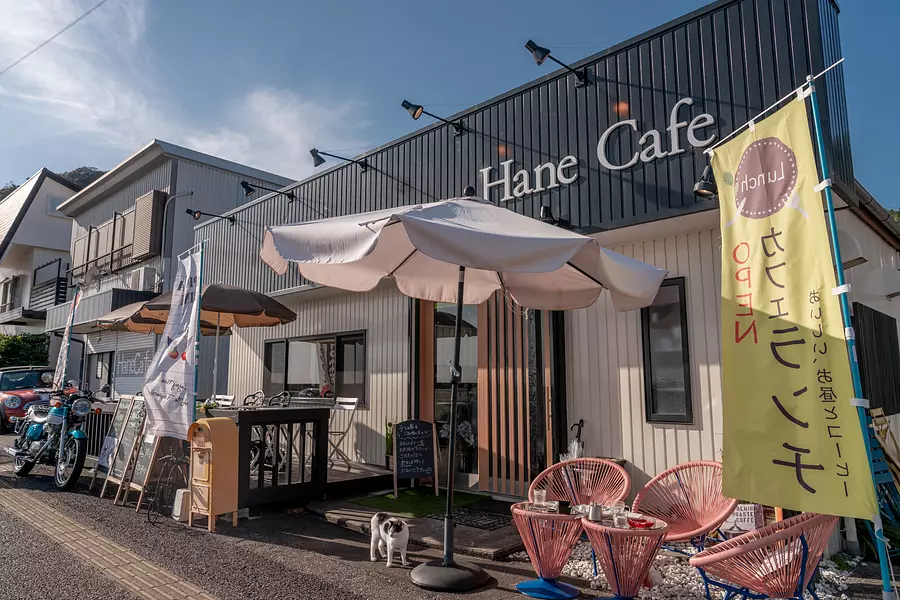
Located right in front of the sea of Shichirimihama, you can enjoy a rich menu of snacks, lunches, sweets, and drinks both inside the restaurant and on the open terrace.
We recommend the tangerine juice from Kumano and the fluffy pancakes topped with plenty of cream!
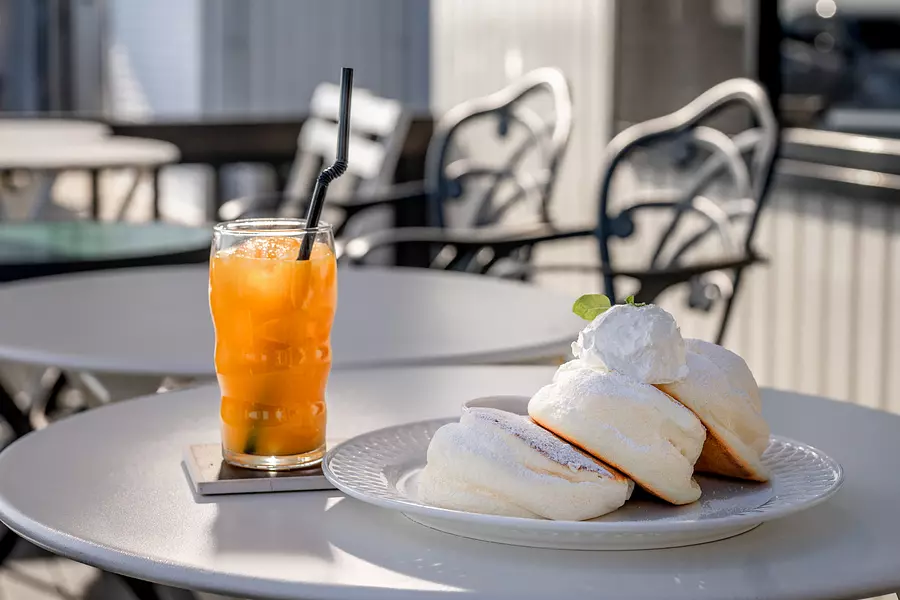
The pancakes are made with locally produced free-range fertilized eggs called Asoboran.
When you take a bite, it has a very light texture! You can feel the flavor and richness of eggs, and you can eat as many pieces as you like.
If you're feeling hungry after walking a lot, why not stop by?
You can fully enjoy the delicious charm of Kumano.
Detailed information
| name | HaneCafe |
|---|---|
| address | 124-17-18 Arimacho KumanoCity |
| telephone number | 090-2625-8859 |
| Official URL | https://localplace.jp/t200598305/index.html |
| Official Instagram | https://www.instagram.com/hanecafe_kumano |
| business hours |
[Monday-Thursday] 11:00-17:00 [Saturdays, Sundays, and holidays] 10:00-17:00 |
| Regular holiday | Friday |
| parking | Yes 7 units |
| Access by public transportation | 15 minutes walk from JR Kisei Main Line "KumanoCity shi Station" |
| Access by car | Approximately 5 minutes south from Kumano Owase Road "Kumano Odomari IC" via National Route 42 |
River Kumano Kodo/Kumano River boat ride
Now, once you've filled your stomach with sweets made with delicious local ingredients, you're almost at your goal. As you walk along the coastal road, you will see the Kumano River.

In the past, aristocrats visiting the Kumano Sanzan would take a boat from Kumano Hongu Taisha Shrine down the Kumano River to Kumano Hayatama Taisha Shrine.
For this reason, the Kumano River is also a road that connects the Kumano Sanzan, and is also registered as a World Heritage Site.

Even today, you can take a boat downriver from Kitahinotsu KihoTown, to Gongen Kawara, which is right near Kumano Hayatama Taisha Shrine.
The boat is equipped with sails called sandanbo, which allow the boat to move forward using the power of the wind.

A boat gliding smoothly on the river. Traveling on the water while feeling the breeze is very comfortable.
For those who have traveled long distances on foot, riding on this riverboat must have been a time to take a breather.
Detailed information
| name | Kumanogawa Experience School |
|---|---|
| address | 203 Kitahinotsujo, KihoTown Minamuro-gun |
| telephone number | 0735-21-0314 |
| Official URL | https://www.za.ztv.ne.jp/w58yd3jb/ |
| business hours | 9:00~17:00 |
| parking | Yes (free) |
| Access by public transportation | 15 minutes by car from JR Kisei Main Line "Shingu Station" |
| Access by car (from Kumano direction) | Approximately 40 minutes south from Kumano Owase Road "Kumano Odomari IC" via National Route 42 |
Finally, the end of the journey. To Kumano Hayatama Taisha
Once you get off the boat, your goal, Kumano Hayatama Taisha Shrine, is almost there.
As I walked down the approach, a large red torii gate appeared in front of me.

This is Kumano Hayatama Taisha, the goal of this trip.
It is one of the three Kumano shrines, along with Kumano Hongu Taisha and Kumano Nachi Taisha, and is mainly dedicated to the couple deities of Kumano Hayatama Okami and Kumano Fusumi Okami. It is an old shrine with a beautiful vermilion-painted shrine that has been in existence for nearly 1900 years.

Kumano Sanzan, which has been visited by many people since ancient times, is also called the `` Sacred Place of Resurrection.''
The deep mountains of the Kii Mountains and the wide, blue Kumano Sea.
The nature of the Kumano Kodo Iseji Route impresses us with its beauty, but at the same time teaches us its harshness.
By walking in such nature, unnecessary things may be removed from people's minds, and they may be able to face themselves more and more simply.

When you finally reach the sacred place and put your hands together in front of God, your body and mind will feel lighter, and you will feel as if you have been truly reborn.
Detailed information
| name | Kumano Hayatama Taisha Shrine |
|---|---|
| address | Shingu 1, Shingu City, Wakayama Prefecture |
| telephone number | 0735-22-2533 |
| Official URL | http://kumanohayatama.jp/ |
| business hours | Sunrise to sunset (Awarding place is open from 8:00 to 17:00) |
| parking | Yes (free) |
| Access by public transportation | 15 minutes walk from JR Kisei Main Line "Shingu Station" |
| Access by car (from Kumano direction) | Approximately 40 minutes south from Kumano Owase Road "Kumano Odomari IC" via National Route 42 |
How was that?

This time, as we walk along the Kumano Kodo Iseji Route, we wonder what a modern pilgrimage is like. What changes does walking make? I have clarified this question.
In the first part of the trip, we started at IseJingu, walked, ate, prayed, and slept.
I discovered a new version of myself through encounters with beautiful scenery, delicious food, and the warmth of people.
In the second part of the journey, beyond the deep mountains of the Kii Peninsula, you will be surrounded by the open seascape of Kumano.
I felt as if I had come back to life as I came into contact with the deep and mysterious beauty of nature, the beliefs of the people who were born there, and the activities of history.

Modern pilgrimages may be a precious time to face oneself through nature and people, and be reborn as a new self.
Why not visit Kumano Kodo Iseji to meet your new self?
Click here for a map summarizing the spots visited in the second part ↓
Related spots
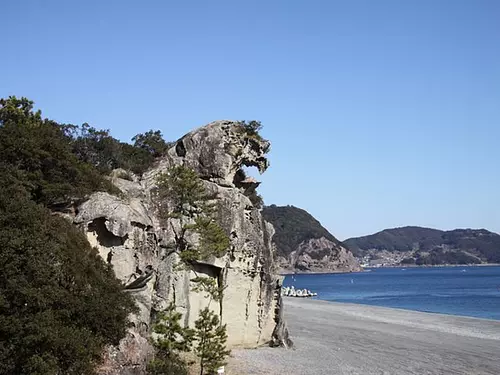
Shishiiwa
HigashiKishu
KumanoCityA 25m tall strange rock shaped like a giant lion roaring towards the sea. Shishiiwa is a World Heritage Site, a natural monument, and a place of scenic beauty. Along with the neighboring Shinsen Cave, it is a guardian dog of Ouma Shrine, which is enshrined upstream of the Ido River that flows nearby.
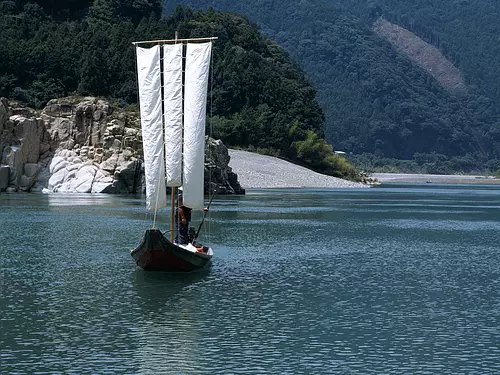
Kumanogawa Experience School
HigashiKishu
KihoTownWhy not experience the full appeal of the Kumano River, a World Heritage Site, by thinking about the relationship between people and the river while riding a riverboat, experiencing the life and culture of the Kumano River basin, and meeting local people?
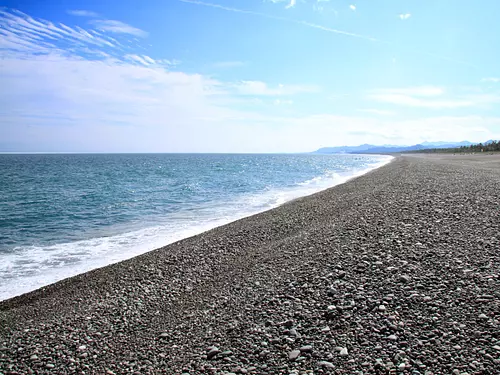
ShichiriMihamaBeach
HigashiKishu
KumanoCityIt is the longest gravel beach in Japan, stretching approximately 22 km from KumanoCity to KihoTown, and has been selected along with other kachiji across the country as one of Japan's ``100 Best Beaches in Japan'' and ``100 Best Natures to Preserve in the 21st Century.'' It is. This beach, which gently receives the turbulent Kuroshio current, is paved with pebbles that have been polished by the rough waves of the Kumano Sea, which runs from the upper reaches of the Kumano River through Shingu. Colorful pebbles called ``Mihama pebbles'' are picked up by ``pickers'' and used for accessories. It is also known as a landing site for loggerhead sea turtles. View this post on Instagram [Official] Post shared by Mie Tourism (Mie Prefecture Tourism Federation) (@kankomie) - May 3, 2019 10:40pm PDT
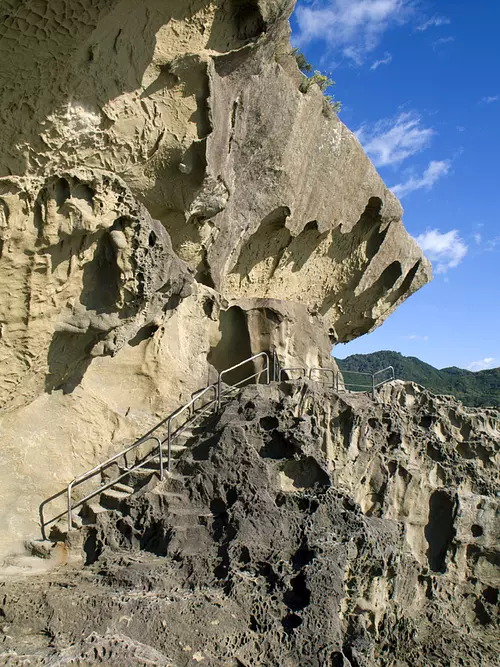
Onigajo (KumanoCity)
HigashiKishu
KumanoCityOnigajo is a large rock wall created by uplift from earthquakes, weathering, and wave erosion. In addition to being designated as a national scenic spot and natural monument, it is also registered as a World Heritage Site as part of the "Sacred Sites and Pilgrimage Routes of the Kii Mountain Range." There is a promenade for about 1km along the rock wall, and you can enjoy the numerous caves large and small, as well as the strangely shaped rocks. At the top of the mountain, there are castle ruins from the Sengoku period, and there is a hiking course that connects it to Kumano Kodo and Matsumoto Pass. You can see the entire Kumano Sea from the observation deck called Oni-no-Miharashi. There are many cherry blossom trees planted along the hiking trail to the top of the mountain, and in spring, four types of cherry blossoms bloom one after another, pleasing the eyes of tourists who visit for a long time. View this post on Instagram [Official] Post shared by Mie Tourism (Mie Prefecture Tourism Federation) (@kankomie) - February 1, 2020, 3:55 a.m. PST
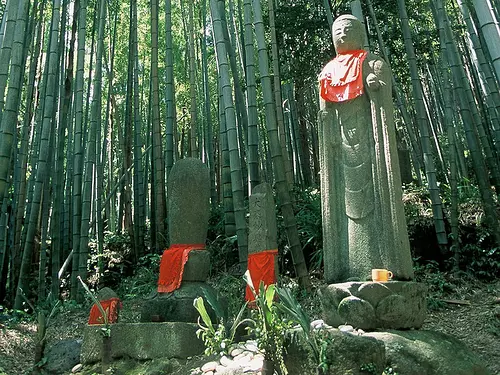
Matsumoto Pass/ Hana-no-Iwaya (Kumano Kodo Iseji Route)
HigashiKishu
KumanoCityA mountain pass that connects Odomari and Kimoto in Kumano City. Most of the road is still paved with stones, and it is located on the mountain side of the scenic Onigajo Castle. On the pass surrounded by bamboo forests, there stands a jizo that is said to have been shot with a gun, and from the plum grove on the way, you can overlook Shichiri Mihama. In addition, it includes a course from Matsumoto Pass to the Onigajo Observatory, so if you are confident in your physical strength, why not go through it? If you cross the Matsumoto Pass, there is no pass to Shingu, and it is a place where pilgrims in the past would have thought of the Kumano Hayatama Taisha Shrine, which sits in Shingu beyond Shichiri Mihama. ○ Course points: Edo cobblestones ~ Matsumoto Pass and Jizo ~ View from plum grove and Azumaya on the pass road, etc. ○ Walking time: about 3 hours ○ Distance: about 5km ○ Rest spot: Kinan Tour Design Center, etc. URL: Matsumoto Pass (HigashiKishuSightseeing Handbook) URL: Mie Prefectural Kumano Kodo Center [Matsumoto Pass] URL: Walking on the first Kumano Kodo Iseji URL: World Heritage Kumano Kodo Iseji (Mie Prefectural Government HP)




